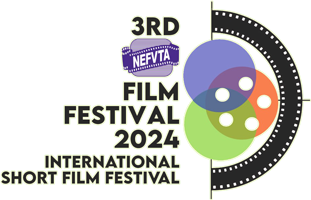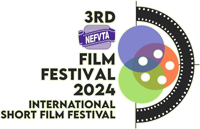A film is made because someone believes in a story or an idea and wants to tell it through a film. This can be an individual, a Producer, a Writer or a Director.
For turning the story or the idea into a film ,it needs to be developed into a script first, provided the idea has cinematic potential. Communication through verbal languages is restricted to the groups or communities of people who understand the respective languages.
To a large extent, the language of cinema goes beyond such boundaries because it relies heavily on visuals and sounds. Both visuals and sound have the power of reaching out people speaking different languages as their appeal is mostly universal. The psychological impact of cinema on the audience, both during the silent and talkie eras has been mind blowing. The magical spell first cast on the viewers during Lumiere brothers’ film screening is seen even today.
Is this because cinema in the world has evolved a language of its own? Narration of a story on the screen was not any easy task. To communicate effectively with the audience, the story had to be made comprehensive and coherent. Film makers, through cinematic languages, have effectively mirrored our society, culture and within it the process of social change. Thus ‘image’ and sound together in fusion come to e recognised as the basic units for the language of cinema. The audience learnt to pick up the message which the moving image conveyed.
The Language of Cinema:
Cinema speaks through visuals, sound, spoken language and the way these elements woven together.
Visuals :
[Settings, expression, posture, gesture of charecters, light, shadows tones, colour and composition]
The location or the set where a scene is taking place tells us something about the region, social and economic status, tastes , culture etc. of the character. Emotions or moods are conveyed through expression, posture, gesture of the characters. Lighting contrast conveys mood, time, season. It shows the characteristics of places or objects, highlights their importance. Colours draw attention, create a mood ,have a psychological impact on the subconscious mind of the viewers. The way visual elements are arranged in a frame also leads us to surmise a meaning.
Sound:
With the advent of sound, cinema evolved a variety of ‘conventions’ to enable musical communication with the audience. In cinema, atmospheric or ambient sounds like that of the traffic, birds, rain, sea waves, household activities etc. give body to a visual. Sea waves can suggest that the house is near the sea or a storm is approaching or they can even suggest a storm within. Sound contrast connects us with life, even when sources of sounds that we hear are out of our vision. They suggest something connected with the scene happening outside the frame. A barking dog can suggest the arrival of its master or of a stranger. Sound assists in understanding the character or of a physical space. Sound in the form of music create a certain mood and heighten emotions.
Editing:
In cinema, editing is joining visuals segments and sounds to create a meaningful structure and give it a flow to generate the ultimate effect for a film. While visuals are seen and sounds are heared the element of editing does not have a concrete form. The same material edited in a different way can create a different meaning, have a different impact. The juxtaposition of shots of a happy face of a character, followed by some memory and then, a sad face, conveys a specific meaning.
As a viewer of cinema, we somewhat understand this language on a sub conscious level. The viewers thus comprehend the message through a ‘convention’ that had been followed in presenting the filmed image. It is pertinent to note that cinema has not solely been confirmatory and enjoyable experience. The language of cinema has appealed and reached out a vast populace. And this has been possible because cinema in the world has had capability to bring ‘art’ closer to people. In short , it has also evolved gradually as an easily communicable art form. As mention earlier cinema in India has evolved a language of its own. At the hands of film makers like Raj Kapoor (Aag, Barsat, Awara, Shree 420), Mehboob Khan( Andaj, Mother India), Bimal Roy( Do BhighaZamin, Bandini) and Guru Dutt ( Pyassa, Sahib BiwiAurGulam) cinema has imbibed the best from contemporary literarure, classical music, poetry and painting. In Mehboob’s films, for instance nuances of painting are evident from the elaborate set and costume designs worked out in minute details. Raj Kapoor’s films have brought forth poetry through simple lyrics and melodiusmusic,rich in tunes, to the audience. Such was the melody of life that he wove into his films like Bobby, PremRog, Ram Teri Ganga Maili. Both Bimal Roy and Guru Dutt, drawing extensively from Bengali literature, have effectively portayed the conflict, unrest and social change they perceived in Indian society. Thus ,at the hands of these films directors, the language of ‘sign structures’ through image and sound , brought out the best of ‘art’ on screen.
For a filmmaker, studying the language of visuals is as important as learning about the technology. Only the smooth blending of both the aspects can bring clarity and effect on the screen.
REFRENCES
- Fundamentals of Digital Cinematography sharing Understanding by A.S Kunal.
- Films Journals Internet
HOD MPP DEPARTMENT
DBHRGFTI



